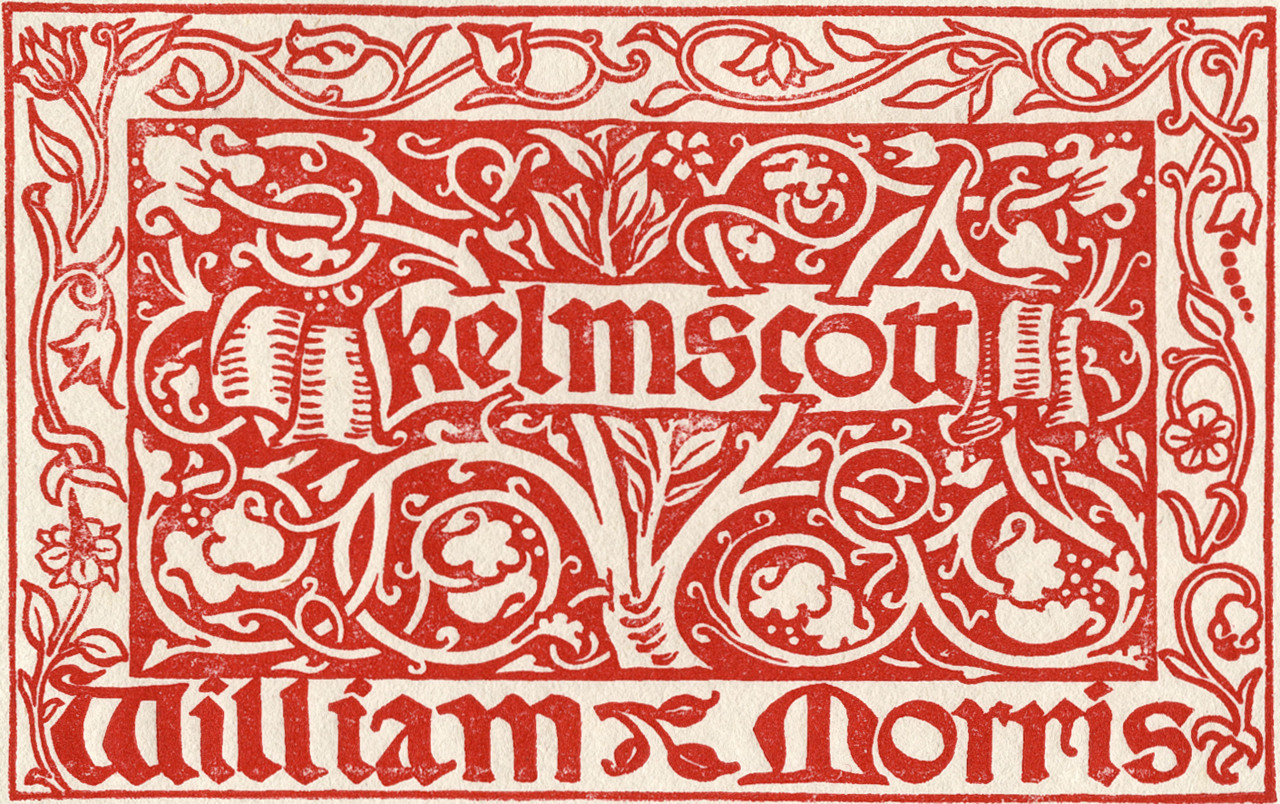William Morris: an ode to the revolutionary artivist of Arts & Crafts
A visionary of many talents, William Morris was born on 24 March 1834 in Walthamstow, Essex to a wealthy middle-class family.
The British textile designer, poet, novelist, translator, socialist activist, and founder of the Arts and Crafts movement, which emphasized the value of traditional craft skills that seemed to be disappearing in the mass industrial age changed printing and design forever with his Kelmscott Press and its small yet hugely influential line of masterfully crafted and readable limited editions.
To understand his legacy one should consider that Morris’ “aesthetic and social values became a leading force in the movement. The Kelmscott Press influenced much of the fine press movement in England and the United States during the late nineteenth and early twentieth centuries. It brought the need for books that were aesthetic objects as well as words to the attention of the reading and publishing worlds.”
For him, printing those was his attempt to “restore all the beauty of illuminated lettering, the richness of gilding and grace of binding that used to make a volume the treasure of a king.”
A political thinker Morris was involved in Britain’s early socialist movement having embraced Marxism and influenced by anarchism in the 1880s. Morris was a committed revolutionary socialist activist before devoting his talent and visionary thinking to Kelmscott Press which he founded in 1891.
His private-press movement was Morris’ resistance to industrialism and the decline in the quality of book design and production.
“Cheap, thin paper, shoddy presswork, drab, gray inks, and anemic text typefaces were often the order of the day. Near the end of the century, a book-design renaissance began as a direct result of the English Arts and Crafts Movement. William Morris, the leader of the movement, was a major figure in the evolution of design” writes Britannica. “Deeply concerned with the problems of industrialization and the factory system, Morris believed that a return to the craftsmanship and spiritual values of the Gothic period could restore balance to modern life. He rejected tasteless mass-produced goods and poor craftsmanship in favour of the beautiful, well-crafted objects he designed. In 1888 Morris decided to establish a printing press to recapture the quality of books from the early decades of printing.”
His Kelmscott Press began to print books in 1891 recapturing “the beauty and high standards of incunabula (texts produced when books were still copied by hand), and the book again became an art form.” Morris designed decorative borders, initials, and three bespoke typefaces — Golden Type (1890), Troy Type (1892), and Chaucer Type (1893) — based on types from the 1400s.
“Morris’s concept of the well-designed page, his beautiful typefaces, and his sense of design unity — with the smallest detail relating to the total concept — inspired a new generation of graphic designers. His typographic pages, which formed the overwhelming majority of the pages in his books, were conceived and executed with readability in mind, another lesson heeded by younger designers.
Morris’ reexamination of earlier type styles and graphic-design history also touched off an energetic redesign process that resulted in a significant improvement in the quality and variety of fonts available for design and printing; many designers directly imitated the style of the Kelmscott borders, initials, and type styles. More commercial areas of graphic design, such as job printing and advertising, were similarly revitalized by the success of Morris.”
Happy birthday William Morris! Born #onthisday in 1834, he's best known as the 19th century's most celebrated designer and a key figure in the Arts & Crafts Movement.
— V&A (@V_and_A) March 24, 2020
Explore his life and work: https://t.co/Am87q7hE9A pic.twitter.com/wNoXpiSlbd
His first typeface was the serif font “Golden Type,” designed exclusively for Kelmscott Press, in 1890. This “old-style” serif font was based on type designed by engraver and printer Nicolas Jenson in Venice around 1470 and it is named for the Golden Legend, which was intended to be the first book printed using it.
The type design sparked a trend of other typefaces in a similar style commissioned for fine book printing in Britain, including that of the Doves Press, which was co-founded by Walker.
LISTEN UP! Tomorrow morning, EAC Lecturer Ingrid Hanson will be talking William Morris with Melvyn Bragg on 'In Our Time', BBC Radio 4. @ihhanson @UoMSALC Details here: https://t.co/bOPHX07ujV
— Manchester English (@ECW_UoM) July 4, 2018
“He sought to recreate the rich visual texture he admired in books printed in the second half of the 15th century. Morris was extremely particular about everything in the typographic process. He knew the importance of spacing between both letters and lines in getting type to sit well on the page. Although the Kelmscott style looks very dense to modern eyes, Morris was committed to trying to balance his love of medieval style with readability. He also had obvious ideas about the use of margins and how illustrations should be integrated with the text, as well as about the right paper to print on” writes V&A.
The designer, thinker, and well-respected writer, lover of calligraphy and all things arts and crafts, William Morris influenced humanity in numerous ways.
“The variety of Morris’s ideas and activities bring together those who are interested in him as a designer, craftsman, poet, and socialist, who admire his robust and generous personality, his creative energy and his courage” writes the William Morris Society. “His ideas on how we live and how we might live, on creative work, leisure and machinery, on ecology and conservation, on politics and the place of arts in our lives remain as stimulating now as they were over a century ago.”
Morris passed away on 3 October 1896 leaving us with a highly important legacy, more relevant now than ever.
Tags/ type design, typefaces, printing, activism, britain, designer, william morris, arts and crafts, industrialism, poet, socialism





























